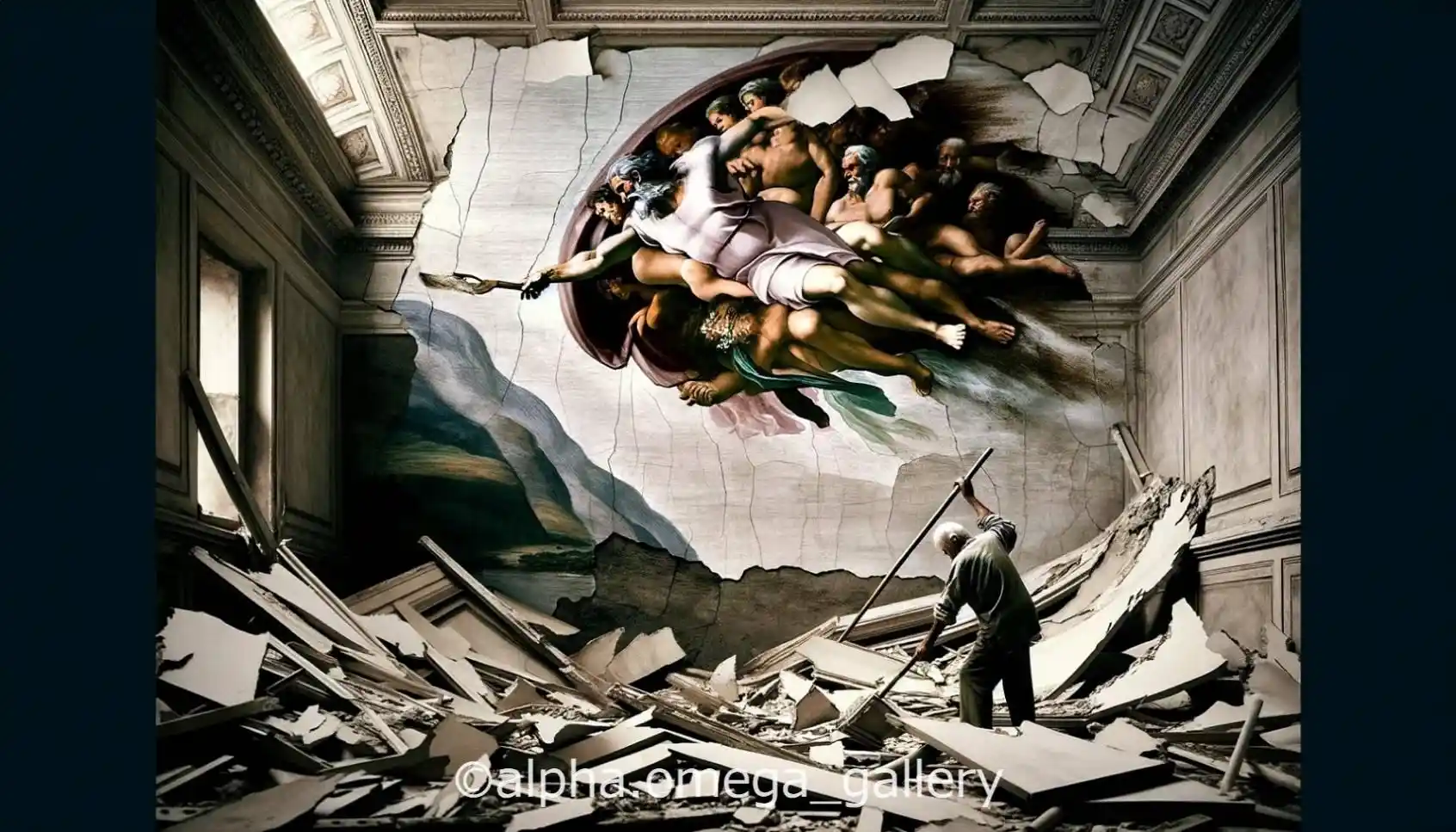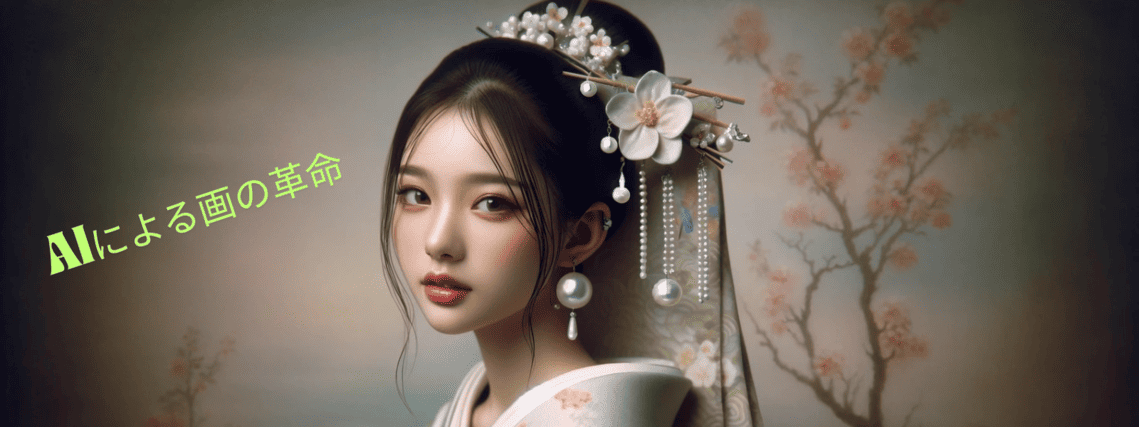Reinterpreting Michelangelo’s “The Creation of Adam”: The Revival of Art Amidst Ruin
2025.02.05投稿
広告

Reinterpreting classic masterpieces allows us to uncover new layers of meaning and deepen our appreciation for timeless art. This article explores a modern reinterpretation of *The Creation of Adam* by Michelangelo, in which the artist is depicted restoring the fresco amidst the ruins of a collapsed structure. This powerful imagery contrasts the grandeur of art with the fragility of reality, emphasising the enduring significance of cultural preservation. By examining this unique vision, we gain fresh insight into the resilience of artistic expression and its ability to withstand the test of time.
First Impressions and Reflections
This reinterpretation portrays Michelangelo restoring a section of “The Creation of Adam” inside a ruined building. The striking contrast between the collapsed walls and scattered debris against the grandeur of the ceiling fresco visually juxtaposes the greatness of past art with the decay of the present. Michelangelo’s painstaking restoration efforts symbolise the enduring power of art and the resilience of human creativity.
Background and History of the Original Painting
Title, Artist, and Year of Creation
The original masterpiece, *The Creation of Adam*, was painted by Michelangelo Buonarroti as part of the Sistine Chapel ceiling frescoes between 1508 and 1512.
Historical Context of the Painting
*The Creation of Adam* is a section of the frescoes on the Sistine Chapel ceiling, inspired by the biblical Book of Genesis. Michelangelo dramatically captures the moment of divine creation as God reaches out to touch Adam’s finger, symbolising the origin of life and divine power.
Key Features of the Painting
The defining feature of *The Creation of Adam* is the tension and beauty in the near-touch between God’s and Adam’s fingertips. Michelangelo’s meticulous anatomical precision and dynamic composition make this painting an unparalleled masterpiece. The contrast between God and Adam symbolises the sacred and the human essence.
Key Aspects of the Reinterpretation
In this reinterpretation, *The Creation of Adam* is depicted within the ruins of a collapsed building. The following elements stand out:
Colour Usage
The original fresco’s vibrant colours remain intact, but they starkly contrast with the dark, desolate tones of the ruined background. This contrast highlights the immortality of art against the fragility of reality.
Theme
While the original theme of *The Creation of Adam* revolves around the genesis of life, in this reinterpretation, it transforms into the theme of artistic revival and preservation. Michelangelo restoring the fresco amidst ruins becomes a symbol of hope and regeneration.
Stylistic Changes
While preserving the divinity and beauty of the original, the reinterpretation integrates modern themes of destruction and chaos. The depiction of a dilapidated structure and scattered rubble emphasises the vulnerability of art and the importance of its preservation.
Analysis
This reinterpretation transforms the themes of divinity and life in *The Creation of Adam* into the modern concept of artistic preservation and revival. Great art from the past becomes a beacon of hope amidst contemporary decay, underlining the power of human creativity and the necessity of preserving cultural heritage. This reinterpretation enhances the depth of the original piece while offering a striking new perspective, leaving a profound impact on the viewer.
Final Thoughts
This artwork reimagines Michelangelo’s *The Creation of Adam* through a new lens, depicting the restoration of art amidst destruction as a symbol of resilience and hope. The striking contrast between the decayed surroundings and the vibrant fresco highlights the immortality of art and the boundless creativity of humankind. This reinterpretation deepens our appreciation of the original masterpiece while introducing an entirely new layer of meaning.
